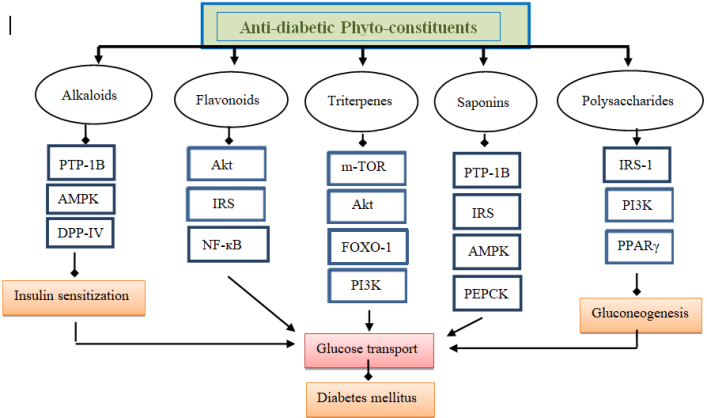Mechanistic approach of anti-diabetic compounds identified from natural sources

Abstract
Type-2 diabetes mellitus (T2DM) is a global disease, which leads to various other life threatening diseases and affects the quality of life. Current therapies of T2DM have various side effects and ultimately lead to insulin resistance, along with financial burden. Therefore, comparative study of natural compounds along with their mechanisms has been discussed, which may lead toward better understanding of their efficacy and selection of future anti-diabetic drugs. Traditional medicine is promising to treat T2DM, where more than 200 plants and other species are shown to have anti-T2DM effects. Moreover, these natural products have different types of molecular mechanisms, i. e. ?-cell regeneration, insulin mimicry, AMPK, Akt, PPARs, LXR activation and inhibition of ?-glucosidase, TNF- ?, sodium glucose co- tranporters and oxidative stress. At the same time, a number of compounds have been reported to have in vivo efficacy. As number of investigators have speculated the molecular mechanism of these natural opmpounds, this review is focused on the molecular mechanism of different types of natural anti-diabetic molecules and their classes along with their efficacy in animal models. This review will provide a broad idea about anti-diabetic compounds to scientific and common people and will help to choose the dietary components and traditional medicines effective in T2DM.



